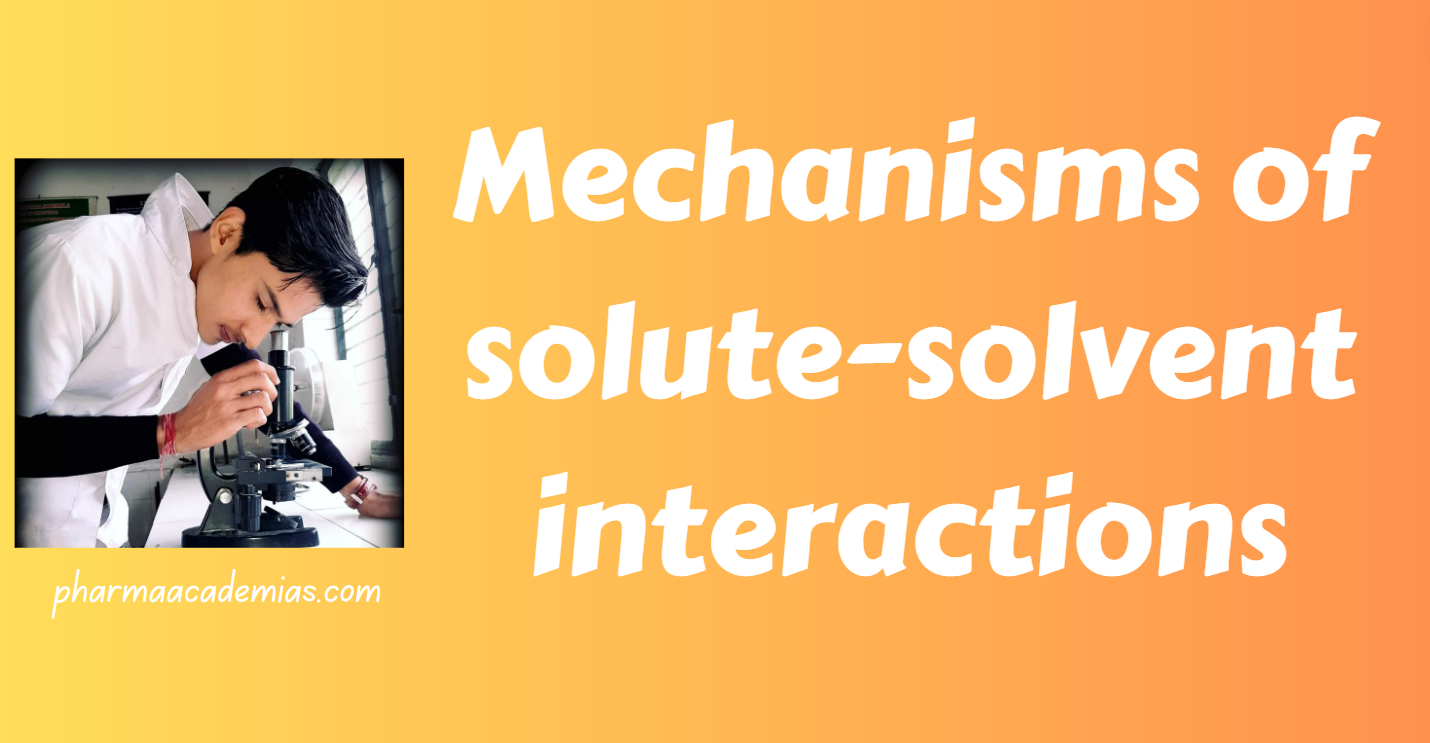A solute dissolves in a solvent through favorable interactions between the two. The free energy changes of both the solute and solvent influence this dissolution. The free energy of solvation encompasses various factors, and the process can be broken down into three stages:
(i) A solute (drug) molecule is ‘removed’ from its crystal.

Segregating the solute from the bulk solute is necessary. This is enthalpically unfavorable as it disrupts solute-solute interactions, but it is entropically favorable.
(ii) A cavity for the drug molecule is created in the solvent

A cavity has to be generated in the solvent. The cavity’s formation will be entropically and enthalpically unfavorable as the organized structure of the solvent decreases, resulting in fewer solvent-solvent interactions.
(iii) The solute (drug) molecule is inserted into this cavity.

The solute must occupy the cavity created in the solvent. Placing the solute molecule in the solvent cavity requires several solute-solvent contacts; the larger the solute molecule, the more contacts are established. If the surface area of the solute molecule is A, and the solute-solvent interface increases by γ12 A, where γ12 is the interfacial tension between the solvent1 and the solute2, it leads to favorable solute-solvent interactions. This is entropically favorable as the mixture is more disordered than when the solute and solvent are not mixed.
Dissolution frequently occurs when the interactions between the solute and solvent resemble those between solvent molecules, characterized by the principle ‘Like Dissolves Like.’ Consequently, polar solutes dissolve in polar solvents, while non-polar solutes dissolve in non-polar solvents. Conversely, when the solute and solvent exhibit different natures, the solute tends to be insoluble in the solvent. The dissolution process is driven by a favorable balance, where the attraction between solute and solvent surpasses solvent and solute-solute attractions.

